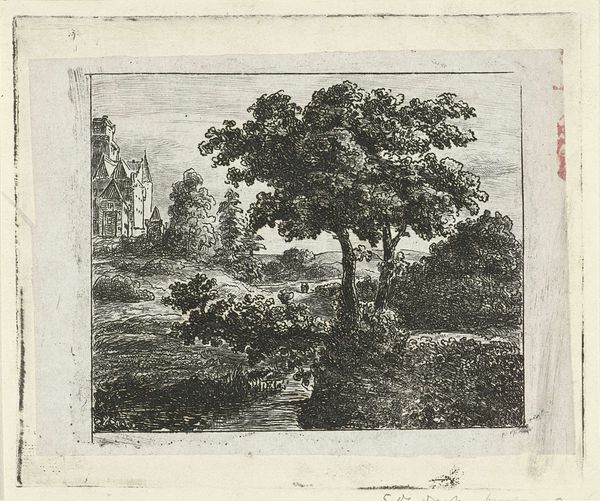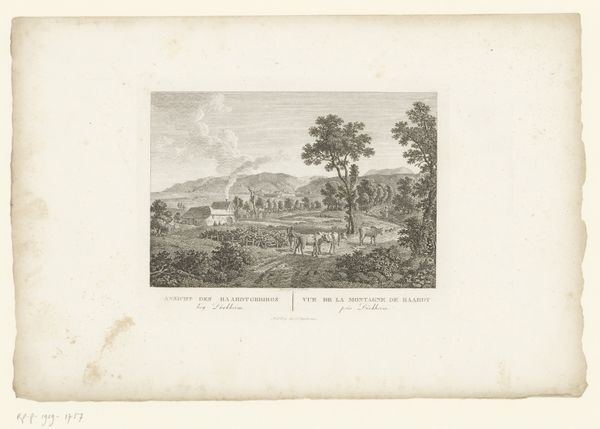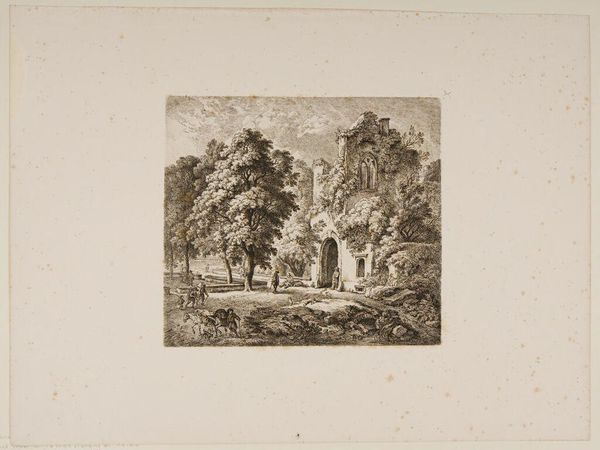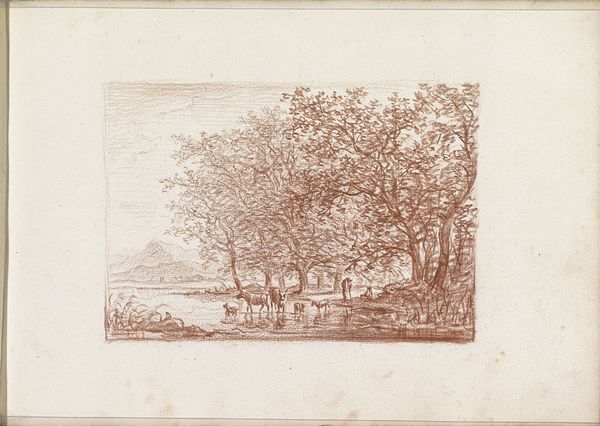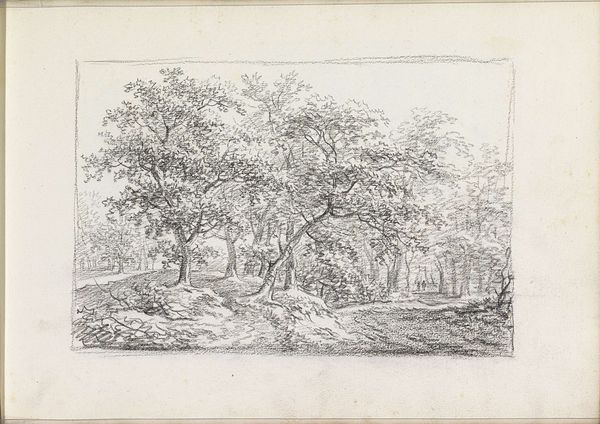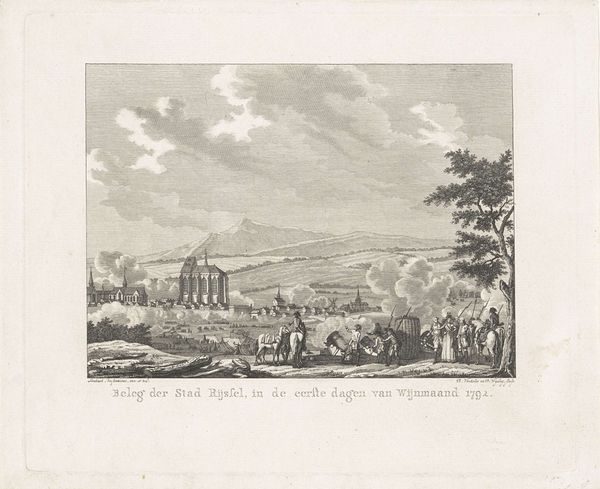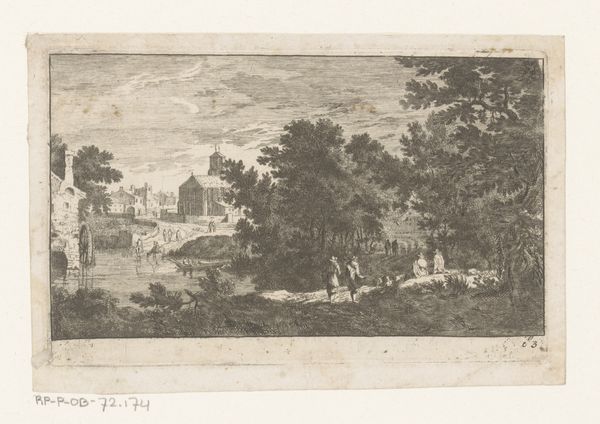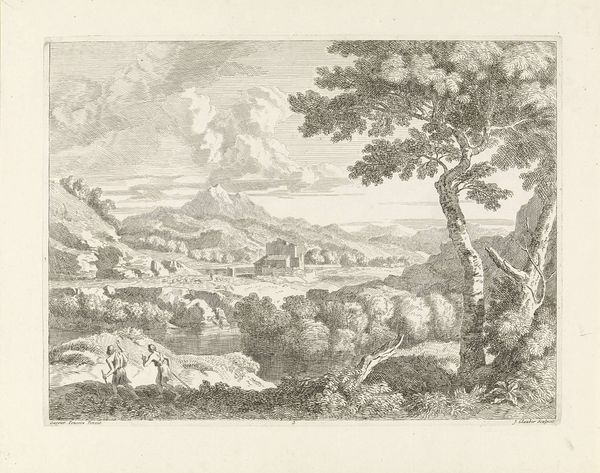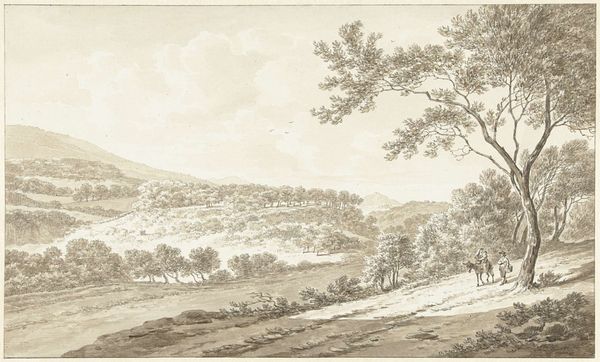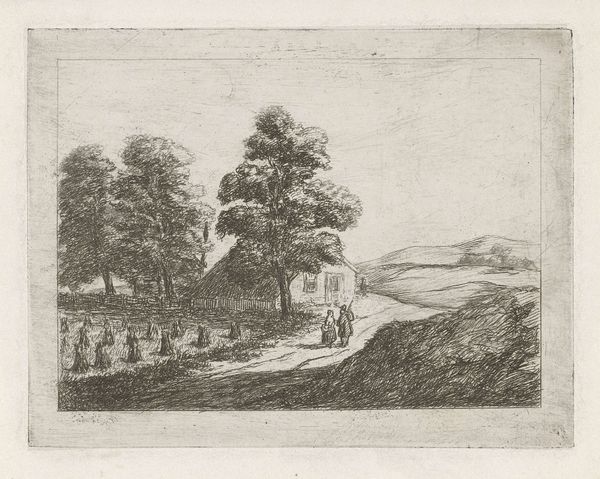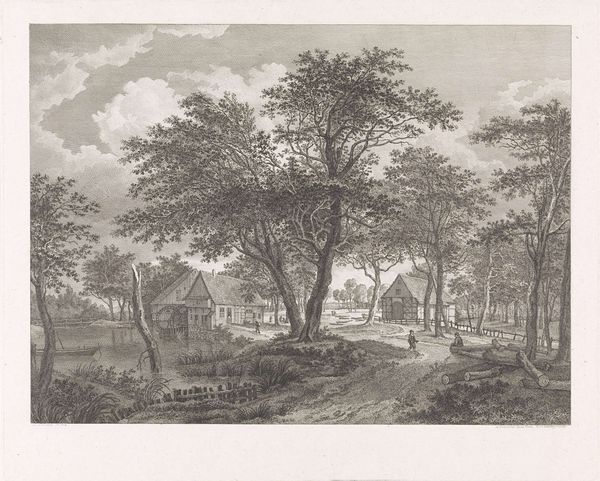
drawing, pencil
#
drawing
#
aged paper
#
toned paper
#
old engraving style
#
sketch book
#
traditional media
#
landscape
#
personal sketchbook
#
romanticism
#
pencil
#
sketchbook drawing
#
cityscape
#
watercolour illustration
#
storyboard and sketchbook work
#
sketchbook art
Dimensions: height 85 mm, width 110 mm
Copyright: Rijks Museum: Open Domain
Curator: Welcome. We’re standing before Ernst Willem Jan Bagelaar’s “Gezicht op Kronenberg bij Frankfurt am Main,” created around 1801. It's a pencil drawing, remarkably detailed for its size. Editor: Immediately, it feels like peering into a dream, all those wispy branches and hazy rooftops. I’m completely drawn into the gentle stillness of the village in the background, and that sky feels pregnant with light, about to burst. Curator: Indeed. Bagelaar captured this particular moment in time during the Romantic period, when there was this heightened interest in landscape, nature, and emotion. His technique, this sort of delicate pencil work, adds to that sensibility. There's a careful arrangement, framing the town through the trees, making it feel picturesque. It wasn’t enough just to portray a place, it was equally about conveying atmosphere and feeling. Editor: The lone figures in the foreground make me feel like I'm spying from afar. The romantic idea of getting away from everything and being closer to nature. Also, this paper seems to have lived a little. I love how those small imperfections whisper of time. Curator: Absolutely, it shows its age. One can imagine Bagelaar on site, in this exact location, sketching away. There's a sense of authenticity. However, there is a fine line, during the Romanticism, between pure nature and nature enhanced for aesthetics and political motives. The lines were often bent to enhance narratives that promoted particular power structures and ideal visions. Editor: Ah, so this wasn't just an innocent, "Wow, pretty trees!" situation, but perhaps had layers of meaning for the audience it was intended for? I love thinking about what he leaves out just as much as what he includes. What wasn’t considered paintable back then? Curator: Precisely. Everything about image-making, including seemingly harmless landscapes, always involved selections of what and who were visible. Editor: Well, suddenly those branches look a bit more...political. Now I feel compelled to reimagine it from a completely new perspective, with all those potential unheard narratives behind those buildings and under that sky. I think I see this piece in an entirely new light, thanks to you! Curator: And that's the beauty of viewing art through different lenses—historical and emotional, artistic and analytical. Hopefully, everyone will go away with their own vision enhanced a little, too!
Comments
No comments
Be the first to comment and join the conversation on the ultimate creative platform.
